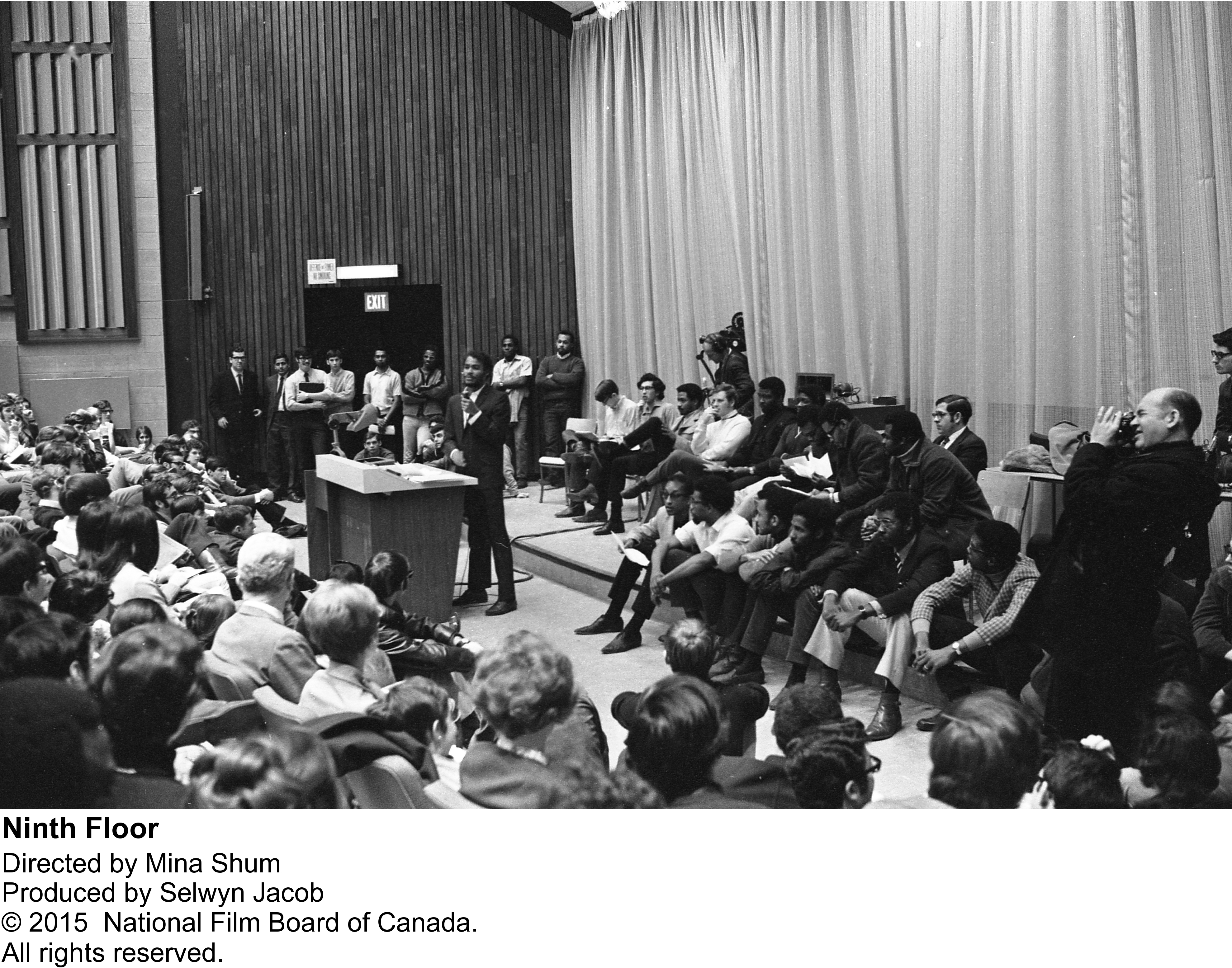In 1968, six students from the Caribbean attending Sir George Williams University (part of present-day Concordia University) accused their biology professor, Perry Anderson, of giving Black students in his classes lower grades than their white peers.
For two weeks in January 1969, protesters demanding racial justice occupied the ninth floor of Henry F. Hall building. In its aftermath, nearly 100 students were arrested—including a sitting senator and a future statesman—and property damage totalled $2 million.
The Sir George Williams Affair was Canada’s largest student occupation and perhaps one of Canada’s most significant events around race relations, but it’s probably not featured in most history textbooks.
But a new documentary from the National Film Board (NFB) called Ninth Floor is attempting to share the event with a new generation.
The documentary was shown at the 2015 Toronto International Film Festival and is now being featured at Canada’s Top Ten Film Festival. The film includes archival footage from the protests, and interviews from the people who were involved.
David Austin, a historian on Black radicalism in Quebec in the 1960s and one of the researchers for Ninth Floor, said the event influenced the consciousness of Black Quebecers.
“It turned notice in Canada nationwide,” Austin said. “Black folks were forcing a presence.”
What eventually became a tense confrontation between police and protesters began a year earlier when students approached the university’s administration about Anderson. The school agreed to set up a committee to investigate the allegations. After almost a year went by with little advancement from the school, students decided to take further action.
On Jan. 29, 1969, the six original complainants and about 200 additional students walked out of the committee’s hearings in protest. The group moved to the school’s ninth floor computer centre, planning a peaceful sit-in in an attempt to finally gain justice.
Sen. Anne Cools, Canada’s first Black senator who is currently its longest-serving member, was one of the protesters.
“The fact of the matter is that a handful of students raised some complaints—it wasn’t worked out as well as it should have been, and that caused suffering for a larger number of people,” said Cools, who was 25 years old at the time of the protests. “These were events that were very commonplace in the ‘60s. It was a great time of social justice, and a great time of social renewal.”
On the 13th day of protest, negotiations between the students and the administration led to a settlement. Most students left the building when news of an apparent settlement reached the ninth floor. Fewer than 100 protesters were still in the ninth floor computer lab when the negotiations fell apart later that day.
The following day, on Feb. 11, more than 400 protesters enraged at the news of the failed negotiations barricaded the stairwells with chairs, shut off the elevator and telephone connections, and threatened to destroy the computers. A fire had broken out in the building on that day.
The police and the riot squad soon stormed the computer room, arresting 97 protesters, both Black and white, in what became known as the Computer Riots.
Ninth Floor shows footage of events outside the building, including scenes of racial epithets being chanted at the protesters.
After the event, Cools was sentenced to four months in prison but later pardoned. In 1984, Cools was appointed to the Senate.
The university found Anderson not guilty of racism to the six original complainants but did establish new procedures, regulations, and an ombudsman office to deal with discrimination.
This incident has since become known as a landmark event in the history of race relations in Quebec.
“I think [the protests] made a huge impact in that moment, which has its ripple effects today,” Austin said. “It really signified the presence of Black people in Canada when, in the time prior to that, they were seen as invisible.”
Cools, now 73 years old, said the new documentary will serve a purpose in educating the public.
“I have no doubt that this film will serve a very useful social and historical purpose in putting this situation before the public,” Cools said. “The film will speak for itself and will go a long way filling any gaps.”
Forty-seven years since the protests occurred, Austin said its participants’ stories have been largely untold or excluded.
“There is a narrative of insiders and outsiders, and the outsiders don’t get to narrate their voices and speak,” Austin said. “Or when they do, that narrative is excluded.”
“Change comes about when people make a decision to organize themselves,” he added. “And ultimately, that’s what the protests were about.”






